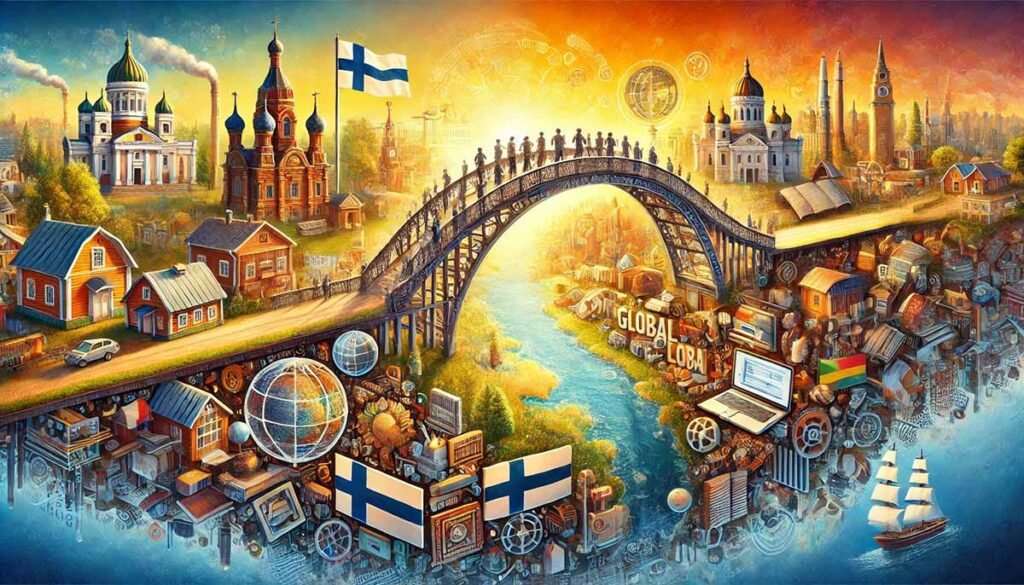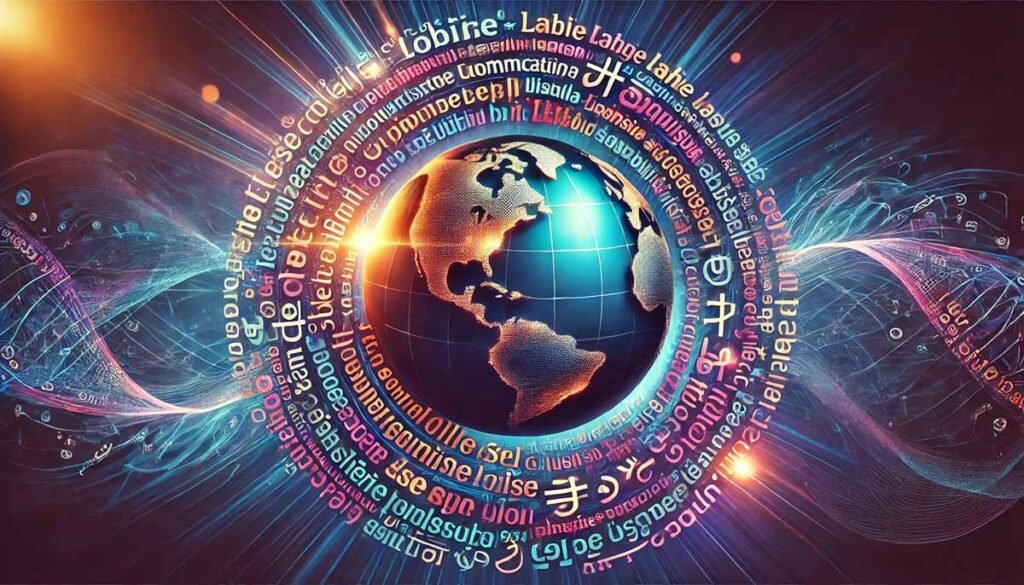Communication across languages is more important than ever in today’s globalized world. At the heart of this capability lies the art of translation, known in Finnish as käöntöjä. But käöntöjä is much more than just converting words from one language to another—it is a powerful tool that bridges cultures, fosters understanding, and connects people from different backgrounds.
In this article, we will explore the magic of käöntöjä, exploring its rich history, the artistry involved, and its significant impact on both communication and culture. We will also uncover translation challenges and why, even with modern technology, the human touch remains irreplaceable. Whether you are a language enthusiast or a business owner looking to expand globally, understanding the power of käöntöjä is essential.
Understanding Käöntöjä
What is Käöntöjä?
The Finnish term käöntöjä translates directly to “translation” in English. However, its significance goes far beyond mere word substitution. In Finland, a country with a rich linguistic heritage, käöntöjä is a cornerstone of cultural preservation and communication. It is the medium through which ideas, stories, and knowledge are shared between Finland’s two official languages, Finnish and Swedish, and increasingly, between Finnish and the rest of the world.
The Cultural Significance
Käöntöjä is more than just a linguistic tool—it is a cultural bridge. It allows different linguistic communities within Finland to connect and understand each other. It is also crucial to how Finnish culture interacts with the wider world, bringing Finnish literature, music, and traditions to a global audience.
In essence, käöntöjä encapsulates the importance of maintaining cultural identity while embracing diversity. Through translation, we can truly appreciate the depth and richness of different cultures.
Historical Evolution of Käöntöjä

Origins in Northern European Folklore
The history of käöntöjä is as ancient as human civilization itself. Originating from oral traditions and old folklore in Northern Europe, translation has always been a vital part of cultural exchange. Early forms of translation were seen in how stories, myths, and knowledge were passed down through generations. These oral traditions laid the foundation for the complex art of translation that we know today.
Key Milestones in Translation History
As trade routes expanded and written language evolved, translation became more structured. For example, translating religious texts during the medieval period was crucial in spreading religious teachings across different cultures. The Islamic Golden Age further advanced translation by preserving and translating classical Greek texts into Arabic, later translated into Latin and used across Europe.
In Finland, käöntöjä played a critical role in maintaining the country’s bilingual nature, particularly during periods of Swedish rule. The ability to translate effectively between Finnish and Swedish has helped to preserve Finnish culture while also facilitating communication and governance.
The Art and Skill of Käöntöjä
Why Translation is Both an Art and a Skill
Käöntöjä is not just about translating words; it is about capturing the essence, tone, and cultural context of the original text. This is what translates as both an art and a skill. A successful translation must resonate with the target audience as naturally as the original does with its audience. This requires linguistic expertise and a deep understanding of the cultural nuances embedded in the text.
The Role of Professional Translators (Käöntäjät)
Professional translators, or käöntäjät, are the unsung heroes of global communication. They possess unique skills that go beyond just fluency in multiple languages. A käöntäjä must have:
- Linguistic Expertise: A deep understanding of both the source and target languages.
- Cultural Fluency: Knowledge of cultural references, idiomatic expressions, and social contexts that influence meaning.
- Attention to Detail: The ability to convey the original tone, style, and intent without losing the message’s authenticity.
Without these professionals, much of the world’s literature, legal documents, technical manuals, and marketing materials would lose their impact—or worse, be misunderstood entirely.
Impact of Käöntöjä on Communication
Enhancing Global Communication
In a world where communication transcends borders, käöntöjä plays a critical role in facilitating this global exchange. It allows for sharing ideas, whether literary masterpieces, scientific research, or everyday business communication. Through käöntöjä, language barriers are broken down, enabling a more connected and informed global community.
Examples in Literature, Poetry, and Daily Language
Käöntöjä has left its mark on various forms of expression:
- Literature and Poetry: Many classic works of literature, like those by Tove Jansson, have been translated from Finnish into multiple languages, allowing them to reach a global audience. These translations are not just word-for-word conversions but are crafted to retain the poetic essence of the original.
- Daily Language: The influence of käöntöjä is also evident in everyday conversations. Idiomatic expressions, cultural references, and humor often require creative translation to be understood across different languages and cultures.
Role in Intercultural Exchange
Beyond simple communication, käöntöjä fosters intercultural exchange. It allows people from different cultural backgrounds to share their stories, traditions, and values, promoting a deeper understanding and appreciation of diversity. This cultural exchange is vital in today’s global society, where collaboration across borders is the norm.
Technological Advancements in Käöntöjä
The Rise of Machine Translation
Technology has revolutionized the field of käöntöjä in recent years. Machine translation tools like Google Translate and AI-powered software have made translation faster and more accessible. These tools are handy for quickly translating large volumes of text or providing rough translations when speed is essential.
Benefits and Limitations of Machine Translation
While machine translation offers many benefits, it is not without its limitations:
Benefits:
- Speed: Machines can process and translate vast amounts of text in seconds.
- Accessibility: Instant translation is available at the click of a button.
- Cost-Effective: Reduces the need for expensive human translators for basic tasks.
Limitations:
- Lack of Nuance: Machines struggle with idioms, metaphors, and cultural references.
- Contextual Errors: Automated translations can miss the context, leading to misunderstandings.
- No Emotional Depth: Machines cannot capture the emotional subtleties that a human translator can.
The Irreplaceable Value of Human Translators
The importance of human translators does not change despite technological advancements. Käöntäjät brings to the table something that machines cannot—an understanding of cultural nuance, emotional depth, and the ability to adapt the translation to suit the audience. They ensure that the translation conveys the correct meaning and resonates with the reader on a cultural and emotional level.
Cultural Significance of Käöntöjä

Preserving and Promoting Cultural Heritage
One of the most significant roles of käöntöjä is in preserving and promoting cultural heritage. By translating works of literature, music, and cinema, käöntäjät ensures that a culture’s unique voice is heard around the world. This is particularly important for smaller nations like Finland, where maintaining cultural identity is a key aspect of national pride.
Role in Cultural Exchange and Mutual Understanding
Käöntöjä is not just about preserving culture; it is also about sharing it. Through translation, one culture’s values, traditions, and stories are shared with others, fostering mutual understanding and respect. This exchange is vital in a world where cultural misunderstandings can lead to conflict while cultural appreciation can lead to collaboration.
How Käöntöjä Enriches Different Cultures
By allowing for the exchange of cultural knowledge, käöntöjä enriches both the source and target cultures. For example, translating Finnish folklore into other languages introduces global audiences to Finland’s rich cultural history, while Finnish readers gain insight into different cultures through translated works.
Challenges and Myths of Käöntöjä
Common Challenges in Translation
Translation is fraught with challenges, particularly regarding cultural references and idiomatic expressions. Translating them is challenging because these components are frequently ingrained in the original culture. To communicate the intended meaning without diluting the essence of the original, Käöntäjät must come up with inventive solutions.
Myths about Translation and Cultural Appropriation
There are many myths surrounding translation, one of the most common being that translation is simply a word-for-word conversion. In reality, käöntöjä is much more complex, involving a deep understanding of both languages and cultures.
Another common myth is that translation can lead to cultural appropriation. While this can happen if not done respectfully, the goal of käöntöjä is to foster appreciation and understanding of different cultures, not exploit them.
Respecting and Appreciating Cultural Diversity
To avoid the pitfalls of cultural appropriation, it is essential to approach käöntöjä with respect and humility. This means acknowledging the cultural significance of the text being translated and striving to preserve its authenticity in the translation.
The Business Case for Käöntöjä
Economic Benefits of Quality Translation Services
Investing in high-quality käöntöjä services can help businesses grow internationally and enter new markets. In today’s digital age, having a multilingual website, marketing materials, and customer support is essential for connecting with international audiences.
Reaching Global Markets
Käöntöjä enables businesses to communicate effectively with customers in different regions, building trust and loyalty. By providing accurate and culturally relevant translations, companies can enhance their brand’s reputation and increase their global footprint.
Importance of Multilingual SEO Strategies
Incorporating käöntöjä into your SEO strategy is also crucial. Multilingual SEO helps improve your website’s visibility in international search engines, driving traffic and increasing conversions. Localizing content and keywords enable companies to reach a larger audience and outperform rivals in global marketplaces.
Future Trends in Käöntöjä

Predicting Future Advancements in Translation Technology
Kaöntöjä has a bright future because the industry is about to undergo a revolution thanks to ongoing technological advancements. Neural machine translation and augmented reality are just a few innovations on the horizon that promise to make translation even more efficient and accurate.
Emerging Trends: Neural Machine Translation and Augmented Reality
Artificial neural networks are used in neural machine translation to increase translation accuracy, especially for complicated texts. Meanwhile, augmented reality could allow real-time translation in everyday settings, further breaking language barriers.
The Ongoing Need for Human Translators
Despite these technological advancements, the need for human translators will persist. The subtleties of human communication—emotions, cultural nuances, and context—are things that machines cannot fully grasp. Therefore, käöntäjät will continue to play a vital role in the translation process, ensuring that the magic of käöntöjä is preserved.
Conclusion
Käöntöjä: Unveiling the Secret Power of Translation Magic! Highlights the profound impact of translation on global communication, cultural exchange, and understanding. Translating meanings, values, and perspectives—as well as words—becomes increasingly important as we navigate an ever more interconnected world.
Translation’s significance spans numerous fields, from literature and diplomacy to technology and healthcare, addressing the challenges of capturing nuance and maintaining authenticity. As technology advances, the role of translation will continue to evolve, enhancing our capacity to communicate across languages while emphasizing the irreplaceable value of human insight and cultural sensitivity.
Ultimately, käöntöjä symbolizes more than the technical act of translation; it embodies the spirit of connection and the shared human experience. We can overcome language barriers, strengthen our international community, and appreciate the diversity that gives our world its vibrancy and dynamic quality by embracing the power of translation.
FAQ: Käöntöjä: Unveiling the Secret Power of Translation Magic!
1. What is Käöntöjä, and why is it significant in translation?
Käöntöjä is a Finnish term that directly translates to “translation” in English. However, it signifies much more than just converting words from one language to another. The essence, tone, and cultural subtleties of the original text are preserved in Käöntöjä, which also serves as a cultural and linguistic bridge between various communities. It is significant because it enables effective cross-cultural communication, promotes understanding, and helps maintain the cultural identity of different languages.
2. How does Käöntöjä differ from machine translation?
While machine translation tools like Google Translate have made translation more accessible and faster, käöntöjä emphasizes the art and skill of human translation. Machine translation cannot often capture idiomatic expressions, cultural references, and emotional nuances. Conversely, käöntöjä, carried out by qualified translators (käöntäjät), guarantees that the translation will strike a chord with the intended audience on an emotional and cultural level, maintaining the honesty of the source material.
3. What are the primary obstacles encountered in Käöntöjä?
The primary difficulties in translating käöntöjä are idiomatic phrases, metaphors, and cultural allusions that might not have exact translations in the target language. Translators also need to ensure that the translation preserves the original text’s tone, style, and intent while also being appropriate for the culture of the intended audience. Additionally, distinguishing between cultural appreciation and appropriation is crucial to avoid misrepresentation.
4. How can businesses benefit from investing in Käöntöjä?
Businesses can significantly benefit from investing in quality käöntöjä services by expanding their reach to global markets. Accurate and culturally relevant translations help build trust with international customers, enhance brand reputation, and improve engagement. Moreover, incorporating käöntöjä into multilingual SEO strategies boosts online visibility, driving traffic and conversions in different regions.
5. What role will Käöntöjä play in the future of translation?
As technology advances, käöntöjä will continue to evolve with innovations like neural machine translation and augmented reality. However, the human touch in translation remains irreplaceable. Future trends will likely see a blend of technology and human expertise, where machine translation handles the bulk work, and human translators ensure accuracy, cultural relevance, and emotional depth. Käöntöjä will play a critical role in ensuring that global communication remains compelling, nuanced, and culturally sensitive.
If you found our content helpful don’t forget to share it on your social media: Twitter.
For more insightful articles, please visit BloghubHQ.

